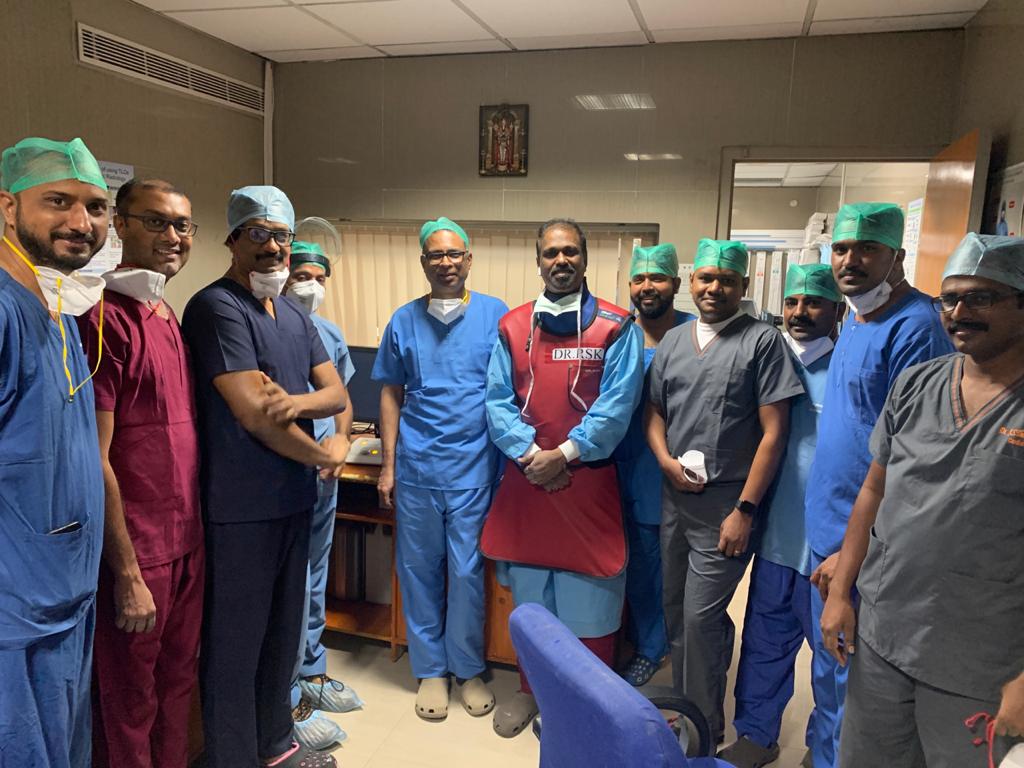Chennai, May 05, 2021: Meenakshi Mission Hospital and Research Centre, Madurai, one of the leading superspeciality hospitals in Tamil Nadu, becomes the first in the state to conduct the implantation of a wireless pacemaker.
Unlike a traditional pacemaker which is placed typically in a patient’s chest and thus needs wires (known as leads) to supply energy for the heart muscles to beat, this new generation pacemaker is implanted directly into the heart and does not require leads. As it is leadless, there is no question of the risk of lead damage (‘lead fracture’), a major complication associated with traditional implants that results in the malfunction of the pacemaker.
The implantation was performed for a 65-year-old patient, Dr. P. Pandian who developed atrioventricular block, a medical condition in which electrical signals between the upper and lower chambers of the heart are weakened or damaged. The procedure was done by the Dr. R. Sivakumar, Senior Consultant – Interventional Cardiology, of the Meenakshi Mission Hospital.
Made by Medtronic and sold under the brand name of Micra, the leadless pacemaker belongs to the atrioventricular (AV) category – that is, it is implanted into the right ventricle of the heart. It is also the world’s smallest pacemaker, about 93% smaller than the traditional pacemakers. Micra AV offers a 12-year battery longevity.
Another key benefit of Micra AV, approved by the US FDA last year, is that it uses a minimally invasive procedure, through a vein in the leg. This requires no chest incision, and thus there is no scar or bump under the skin in the chest.
In his comments, Dr. R. Sivakumar said, “The main purpose of a pacemaker is to prevent the heart from beating too slowly. It stimulates the heart muscle when the heart rate comes down or stops. Traditional pacemakers are implanted in the chest region under skin. They are connected to the heart with the help of leads. However, the leadless pacemaker that we have used for the implantation is different. It is placed inside the heart. Hence it does not require any lead, and eliminates complications associated with leads.
He pointed out that Micra AV can sense the electrical activity in the top chambers (atria) and synchronize the pace of the bottom chamber (ventricles) accordingly, thus achieving Atrio-Ventricular synchrony. The leadless pacemaker is also MRI compatible, which means when the patients get MRI scan, the powerful magnets of the scan machines cannot affect the settings of the pacemaker.
Dr. R. Sivakumar also clarified that though leadless pacemakers have many advantages, they are not appropriate in all cases. For instance, when patients need dual chamber pacing, they will need only a traditional pacemaker.










